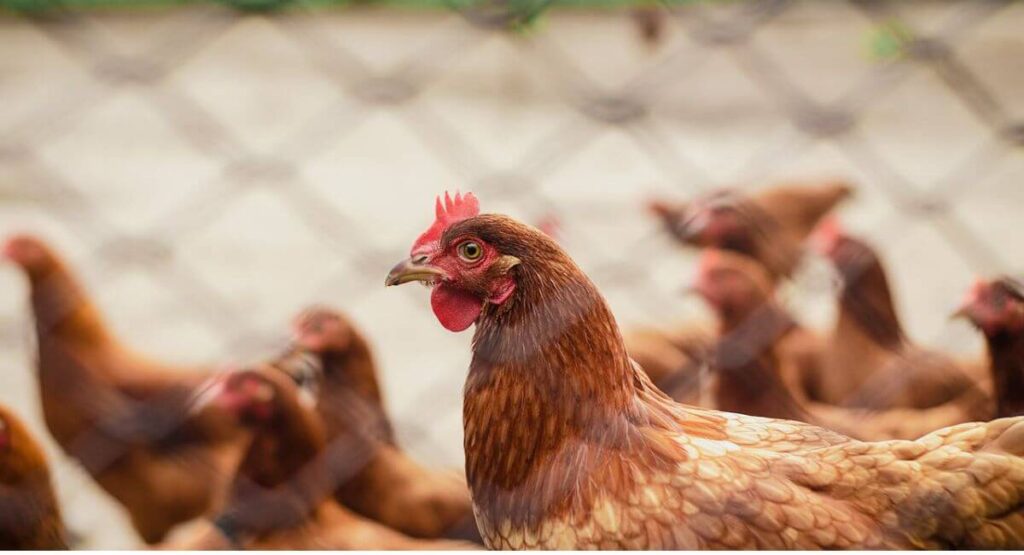
Moving a chicken coop isn’t just about lifting a wooden box and plopping it down somewhere else. It’s about keeping your chickens safe, their home intact, and their stress levels low. Chickens are creatures of habit, and a move can throw them off their game. Add in the risk of predators, a wobbly coop, or a poorly chosen new spot, and you’ve got a recipe for disaster if you’re not careful.
Think of it like moving a family. You wouldn’t just toss your kids in the car and hope for the best, right? You’d plan the route, pack snacks, and make sure everyone’s buckled in. The same goes for your chickens.This guide is here to lend you a hand! We’ll walk you through the process step by step, with practical tips, common mistakes to avoid, and real-world examples to make sure your move goes smoothly.
From planning and prep to reassembly and settling in, we’ve got you covered. By the end, you’ll know exactly how to keep your flock happy, healthy, and safe—no matter where you’re moving them. Let’s get started!
Planning the Move
Moving a chicken coop isn’t just about dragging a wooden box from one spot to another. It’s about making sure your chickens stay safe, happy, and stress-free—and that their home doesn’t fall apart in the process. Imagine planning an exciting road trip! You wouldn’t just hop in the car without checking the gas, packing snacks, and mapping your route, right? The same goes for moving a coop. A little prep work goes a long way.
Start by making a checklist. Timing matters—early morning or late evening is best because it’s cooler, and your chickens will be calmer. Gather your tools: straps to secure the coop, a dolly to move it, and maybe even a friend or two to help. And don’t forget to scout the new location ahead of time. Look for a spot with shade, good drainage, and level ground. You don’t want to set up the coop only to find out it floods every time it rains.
Here’s a big mistake to avoid: not checking the new site for predators or hazards. A 2020 study by the University of Georgia found that 30% of backyard chicken losses are due to predator attacks (Source: University of Georgia Poultry Science Department, 2020). That’s a scary stat, but it’s also a reminder to take a few extra steps to protect your flock. Walk the area, reinforce fencing, and make sure it’s secure before you move your chickens in.
Real-life stories drive this point home. Take the Oregon Tractor Triumph, where a farmer moved a 200-pound coop using a tractor and a team of helpers. By starting at dawn, they kept the chickens calm and pulled off the move without a hitch. On the other hand, there’s the Reddit Collapse Cautionary Tale, where someone rushed the job, didn’t secure the coop properly, and ended up with a collapsed coop and injured chickens. Ouch.
The lesson here? Planning isn’t just a nice-to-have—it’s a must. Whether it’s picking the right time, gathering the right tools, or making sure the new spot is safe, a little effort upfront can save you a lot of trouble later. And your chickens will thank you for it.
Preparing the Chickens
Moving chickens isn’t like moving furniture. Chickens are living, breathing creatures with their own quirks and stress levels. If you’ve ever tried to herd a chicken, you know it’s not exactly a walk in the park. The goal here is simple: keep them safe, keep them calm, and keep them contained. Think of it like prepping a toddler for a car ride—you want them secure, comfortable, and ready to go.
Here’s a practical tip: about an hour before the move, gently gather your chickens and place them in a secure, well-ventilated crate or carrier. Line the bottom with straw to make it cozy and prevent slipping. This isn’t just about comfort—it’s about safety. A loose chicken during a move is a recipe for chaos. Trust me, you don’t want to spend moving day chasing a panicked bird around the yard.
One big mistake to avoid? Moving chickens during extreme weather. Heatwaves can overheat them, and freezing temps can make them miserable—or worse. Research from the University of Arkansas shows that chickens experience a 20% spike in stress hormones during transport (Source: University of Arkansas Division of Agriculture, 2021). That’s a lot of stress for a little bird! So, pick a mild day and keep an eye on the forecast. Your chickens will thank you.
Real-world stories drive this home. Take the Texas Crate Success, where a hobby farmer shared a YouTube video of their smooth move using a straw-lined dog crate. The chickens stayed calm during the move, everything went smoothly, and everyone lived happily ever after. On the flip side, there’s the Loose Carrier Lesson, where a homesteader lost two chickens mid-move because their carrier wasn’t secured properly. The door flapped open, the birds flew out, and chaos ensued. Lesson learned: double-check that carrier!
Prepping your chickens might seem like a small step, but it’s a big deal. A little care upfront means a smoother move, happier birds, and fewer headaches for you. And isn’t that what we all want?
Disassembling and Securing the Coop
Moving a chicken coop isn’t just about lifting and carrying—it’s about making sure the whole thing doesn’t fall apart mid-move. Whether you’re moving the coop in one piece or taking it apart, the key is to reinforce and organize. Think of it like packing a fragile vase: you wouldn’t just toss it in a box and hope for the best. You’d wrap it, label it, and make sure it’s secure. The same goes for your coop.
If you’re disassembling, here’s a handy tip: label every part with masking tape and a marker. Write down what it is and where it goes—like “left wall” or “roof panel.” This might feel like overkill, but trust me, when you’re standing in a pile of wood and screws at the new site, you’ll be glad you did it. Reassembly will be faster, smoother, and way less frustrating.
One big mistake to avoid? Ignoring weak spots. Rusted nails, rotting wood, or loose joints might not seem like a big deal, but they can turn into a disaster during transport. A 2021 survey by Backyard Poultry Magazine found that 45% of coop damage during moves happens because of improper disassembly or lack of reinforcement (Source: Backyard Poultry Magazine, 2021). That’s almost half! So, take the time to inspect and fix any weak areas before you start moving.
Disassembling and securing your coop might not be the most exciting part of the move, but it’s one of the most important. Putting in a little effort now can help you avoid significant problems in the future. And your chickens will appreciate having a sturdy home waiting for them at the new spot.
Real-world stories show why this matters. Take the Wisconsin Zip-Tie Win, where a farmer used zip ties and bungee cords to keep their coop intact during a 100-yard move. It wasn’t fancy, but it worked like a charm. On the other hand, there’s the TikTok Rot Regret, where a family’s coop collapsed mid-move because they didn’t check for rot in the frame. The video went viral, but not in a good way. Lesson learned: a little reinforcement goes a long way.

Transporting the Coop
Moving a chicken coop isn’t just about getting it from one place to another. It’s about getting it there safely, without breaking the coop—or your chickens’ trust. Think of it like moving a giant, fragile puzzle. If you don’t secure it properly, pieces can shift, slide, or even fall apart. And nobody wants to show up at the new spot with a pile of wood and a flock of stressed-out birds.
Here’s a practical tip: use a flatbed trailer or truck and secure the coop with heavy-duty ratchet straps. Double-check the tension before you start driving. It might feel like overkill, but trust me, it’s not. A loose coop is a disaster waiting to happen. And while it might be tempting to just toss it in the back of a pickup truck and hope for the best, resist the urge. Putting in a little extra effort now can help you avoid problems later.
One big mistake to avoid? Driving too fast or taking sharp turns. A USDA study found that 15% of poultry injuries during transport happen because of sudden stops or sharp turns (Source: USDA Poultry Transportation Guidelines, 2022). That’s a sobering stat. So, take it slow and steady. Your chickens—and your coop—will thank you.
Real-world stories drive this point home. Take the California U-Haul Victory, where a homesteader rented a U-Haul trailer to move a large coop. They secured it with straps, drove carefully, and pulled off the move without a scratch. On the flip side, there’s the Facebook Fall Fiasco, where a user shared how their unsecured coop slid off a trailer and shattered on impact. The photos were heartbreaking—and a stark reminder of what can go wrong.
Transporting your coop might feel like the most nerve-wracking part of the move, but it doesn’t have to be. With the right equipment, a little caution, and a lot of common sense, you can get it done safely. And when you see your chickens happily exploring their new home, you’ll know it was worth the effort.
Reassembling and Settling In
Moving a chicken coop isn’t just about getting it to the new spot—it’s about making sure it feels like home. Chickens aren’t big on change. They like things predictable, stable, and safe. So, when you’re reassembling the coop and helping them settle in, think of it like setting up a new apartment. You want everything to work, to feel right, and to keep them comfortable.
Here’s a practical tip: reassemble the coop completely before letting the chickens back in. Use a spirit level to make sure it’s even and stable. A wobbly coop isn’t just annoying—it can stress out your flock. And while you’re at it, check for shade. Placing the coop in direct sunlight without any cover is a big no-no. Overheating can make your chickens miserable, and nobody wants a flock of overheated, cranky birds.
One big mistake to avoid? Rushing the process. According to the Poultry Cooperative Research Centre, chickens take 3-7 days to fully acclimate to a new environment (Source: Poultry CRC, 2023). That means patience is key. Let them explore gradually, and keep an eye out for signs of stress, like reduced egg production or lethargy.
Real-world stories show why this matters. Take the Vermont Gradual Glow-Up, where a farmer shared an Instagram series of reintroducing their chickens to a leveled coop over three days. The result? Happy, relaxed birds and a smooth transition. On the flip side, there’s the Predator Peril, where a blogger lost a chicken to a hawk because they didn’t secure the new site properly. It’s a stark reminder that safety doesn’t stop at the coop—it includes the entire environment.
Reassembling and settling in might feel like the final stretch, but it’s just as important as the move itself. A little care and attention here can make all the difference. And when you see your chickens happily scratching around their new home, you’ll know it was worth the effort.

Monitoring the Chickens Post-Move
Moving day might be over, but your job isn’t done yet. Chickens are creatures of habit, and a big move can throw them off their game. Think of it like starting a new school or job—it takes time to adjust. That’s why monitoring your flock after the move is so important. You’re not just watching for stress or health issues; you’re helping them feel safe and settled in their new home.
Here’s a practical tip: check on your chickens daily. Look for signs of stress, like reduced egg production, lethargy, or changes in behavior. Offer extra water and treats like mealworms to help them feel comfortable. Small gestures can go a long way in helping them adjust. And don’t forget to keep an eye out for subtle signs of illness or injury. A limp, a cough, or a droopy wing may seem minor, but these issues can worsen quickly if you do not address them.
One big mistake to avoid? Assuming everything’s fine just because the move went smoothly. A 2019 study found that 25% of chickens show signs of stress for up to a week after relocation (Source: Journal of Applied Poultry Research, 2019). That’s a quarter of your flock! So, stay vigilant. Your chickens might not be able to tell you how they’re feeling, but their behavior will give you clues.
Real-world stories drive this point home. Take the YouTube Recovery Tale, where a backyard chicken channel documented a hen who stopped laying eggs for two weeks after a move. With extra care, attention, and a few mealworms, she bounced back and started laying again. On the flip side, there’s the Reddit Respiratory Regret, where a user lost a chicken to respiratory issues that went unnoticed after a move. It’s a heartbreaking reminder that early monitoring can make all the difference.
Monitoring your chickens post-move isn’t just about keeping them healthy—it’s about helping them thrive. Putting in a little effort now can help you avoid significant problems in the future. And when you see your flock happily scratching and pecking in their new home, you’ll know it was worth the effort.
Conclusion
Moving a chicken coop doesn’t have to be a headache—for you or your chickens. When you break it down into six steps—plan carefully, prep your chickens, secure the coop, transport with care, reassemble thoughtfully, and monitor closely—it becomes manageable, even straightforward. It’s about taking the time to do things right: from picking the perfect new spot to making sure your flock feels safe and settled afterward. Investing a bit of effort today can spare you a mountain of stress tomorrow!
Now it’s your turn! Have you moved a chicken coop before? What worked—or didn’t work—for you?We’d love to hear from you! Feel free to share your stories, tips, or any questions you have in the comments below. We’re excited to chat! We’d love to hear from you!
FAQs
1. How do I know if my chicken coop is too big to move in one piece?
If your coop is large or heavy, it might be safer to take it apart before moving. Think of it like moving a bookshelf: if it’s too bulky to carry, you’d take the shelves out first. Label all the pieces as you go to make reassembly easier.
2. What’s the best time of day to move a chicken coop?
Early morning or late evening is best. Chickens are calmer during these times, and the cooler temperatures reduce stress. Plus, it’s easier to avoid predators when the flock is settled.
3. How do I keep my chickens calm during the move?
Put them in a secure, ventilated crate or carrier lined with straw. Keep the crate in a quiet, shaded area during the move, and avoid sudden movements or loud noises.
4. What tools do I need to move a chicken coop?
At a minimum, you’ll need:
- Ratchet straps or bungee cords to secure the coop
- A dolly or hand truck for heavy lifting
- A flatbed trailer or truck for transport
- A spirit level to make sure the coop is even when reassembled
5. How do I protect my chickens from predators after the move?
Before moving, check the new location for signs of predators. Reinforce fencing, seal any gaps in the coop, and consider adding motion-activated lights or predator-proof locks.
6. How long does it take for chickens to adjust after a move?
Chickens usually take 3-7 days to get used to a new environment. During this time, keep an eye on them for signs of stress, like fewer eggs or lethargy, and offer extra treats and water to help them settle in.
7. Can I move my chicken coop by myself?
It depends on the size of the coop. Small coops might be manageable solo, but larger ones will likely need help. Ask friends, family, or neighbors to pitch in and make the process safer and easier.
8. What should I do if my chickens seem stressed after the move?
Give them extra water, treats like mealworms, and a quiet, shaded space to relax. Watch them closely for signs of illness or injury, and give them time to adjust. If stress symptoms stick around, check with a vet.
9. How do I prevent the coop from falling apart during transport?
Reinforce weak spots like rusted nails or rotting wood before the move. Use ratchet straps to secure the coop to the trailer or truck, and drive slowly to avoid sudden stops or sharp turns.
10. Do I need to clean the coop before moving it?
Yes! Cleaning the coop before the move reduces the risk of spreading pests or diseases to the new location. Take out all the bedding, scrub the surfaces, and let it dry completely before reassembling.